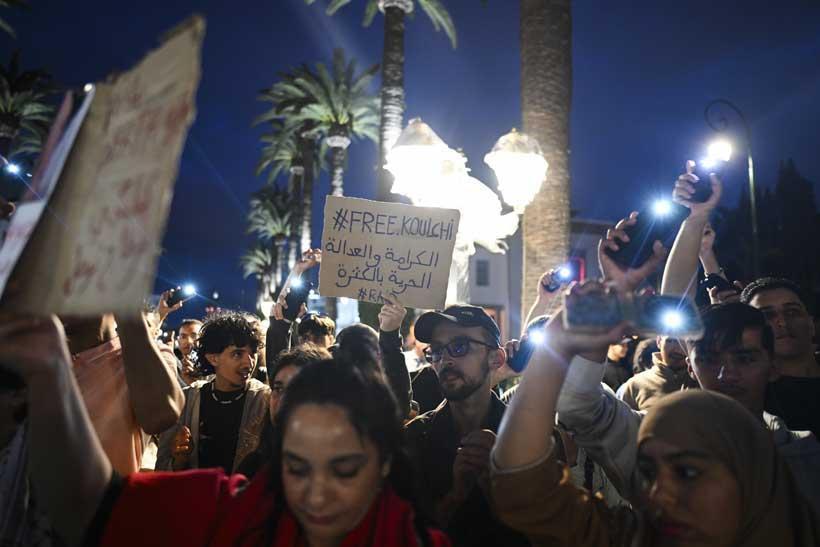By
Nicholas Oakes
Africa-Press – Lesotho. In 2011, the Arab world erupted in a wave of uprisings that came to define a generation’s struggle for freedom. From Tunis to Cairo, young people gathered in city squares to challenge decades of authoritarian rule. The Arab Spring symbolized the power of collective action to shatter political stagnation.
A little over a decade later, a new generation, Gen Z has revived protest culture in a vastly different form. From Nepal and Sri Lanka to Morocco and Madagascar, today’s movements no longer center on overthrowing governments but on exposing injustice, demanding reform, and reclaiming accountability from economic elites. Unlike the Arab Spring, Gen Z protests are not merely political revolts, they are digital revolutions, shaped by internet chat rooms, memes, and a globalized sense of solidarity that extends beyond borders.
The Goals Of Each Movement:
The Arab Spring’s goals were revolutionary in focus. Protesters in Tunisia, Egypt, Libya, and Syria sought the complete dismantling of authoritarian regimes. Their slogan, “bread, freedom, and social justice” were calls for systemic transformation: equitable constitutions, free elections, and an end to political repression. In Tunisia, those aims briefly succeeded; elsewhere, they dissolved into civil war or military takeovers.
By contrast, Gen Z-led movements are pragmatic, reformist, and policy-oriented. Their anger is less ideological and more rooted in institutional failure. In Nepal, protesters forced Prime Minister Pushpa Kamal Dahal to resign in 2025 after weeks of youth-led demonstrations against corruption and unemployment. In Sri Lanka, young activists rallied in 2022 not for revolution but for accountability, demanding that President Gotabaya Rajapaksa resign for mismanaging the economy and depleting national fuel and food reserves.
Similarly, in Morocco, youth unrest in 2025 was triggered by inequality, healthcare failures, and lavish spending on the 2030 World Cup. Protesters marched under banners reading, “We don’t want the World Cup, health first,” a direct challenge to misplaced government priorities. Across these movements, Gen Z has focused less on dismantling the state and more on forcing those in power to govern responsibly. The shift is from regime overthrow to institutional accountability, a movement aimed at reform, not revolution.
The Organizational Structure Of The Protests:
The difference in organization and leadership between the Arab Spring and Gen Z movements is equally striking. The Arab Spring, though often described as spontaneous, still relied on emerging leaders and physical spaces. Figures such as Wael Ghonim in Egypt became the faces of their revolutions, rallying people to gather in iconic squares like Tahrir or Bourguiba. Physical occupation was the symbol and substance of protest, proof of courage and collective will.
Today’s Gen Z movements, by contrast, operate decentralized, anonymous, and leaderless. They use encrypted apps, Discord servers, and TikTok trends to coordinate protests while avoiding the surveillance and arrests that crippled earlier uprisings. In Nepal, the “Gen Z 977” collective mobilized tens of thousands through social media without ever naming a single spokesperson. In Morocco, “Gen Z 212” did the same, organizing national strikes and protests through viral videos rather than formal calls to action.
This leaderless structure has advantages and drawbacks. It prevents regimes from targeting figureheads, but it also makes negotiation and long-term organization more difficult. The Arab Spring movements produced recognizable figures who could engage with institutions or international media; Gen Z’s anonymity protects it from repression but limits its ability to translate momentum into political reform.
Tools and Tactics:
The Arab Spring was often called the “Facebook Revolution.” Activists used Facebook and Twitter to spread information, share footage of police brutality, and coordinate gatherings. These tools were primarily logistical, they helped fill city squares and build transnational solidarity but offered little control over how the world perceived their movements.
Gen Z, however, uses social media not just to organize but to shape the narrative. TikTok, Instagram, and YouTube are their main battlegrounds, and virality is their weapon. Protest footage is edited like digital storytelling, designed to capture emotion, attract sympathy, and amplify injustice. In Morocco, videos contrasting luxury stadiums with underfunded hospitals drew millions of views, forcing international media to cover the protests. In Nepal, drone shots of unarmed protesters facing riot police went viral globally, framing the movement as a moral confrontation between youth and corruption.
Funding has gone digital as well. Crowdfunding platforms, crypto donations, and online mutual aid groups sustain protests that would once have withered for lack of resources. Protesters in Sri Lanka relied on global donations via GoFundMe campaigns to keep demonstrations alive. These online tools make it possible for movements to bypass both traditional political parties and international NGOs, creating self-sustaining ecosystems of activism.
Yet this digital power has limits. The same algorithms that boost visibility also shorten attention spans. Movements that thrive on virality risk fading once the next global crisis trends. The Arab Spring’s challenge was censorship; Gen Z’s is sustaining engagement in an attention economy that rewards novelty over persistence.
The Lasting Impact:
While the Arab Spring reshaped geopolitics, it also left behind deep lessons about the costs of unstructured revolution. Many of those who once chanted for freedom saw their hopes crushed by civil wars or authoritarian retrenchment. Gen Z learned from those failures. Their movements are more cautious, more strategic, and more global in scope. They recognize that toppling a regime is only the beginning, and that accountability must continue long after the hashtags fade.
The Arab Spring arose from faith in democracy’s promise; Gen Z’s uprisings arise from frustration with democracy’s performance. Where the earlier generation believed freedom would fix governance, this one knows governance must secure freedom. Their activism reflects a shift from hope to hard-nosed pragmatism, from idealism to innovation.
The Arab Spring proved that young people could shake regimes. Gen Z is proving they can reshape systems.
For More News And Analysis About Lesotho Follow Africa-Press






